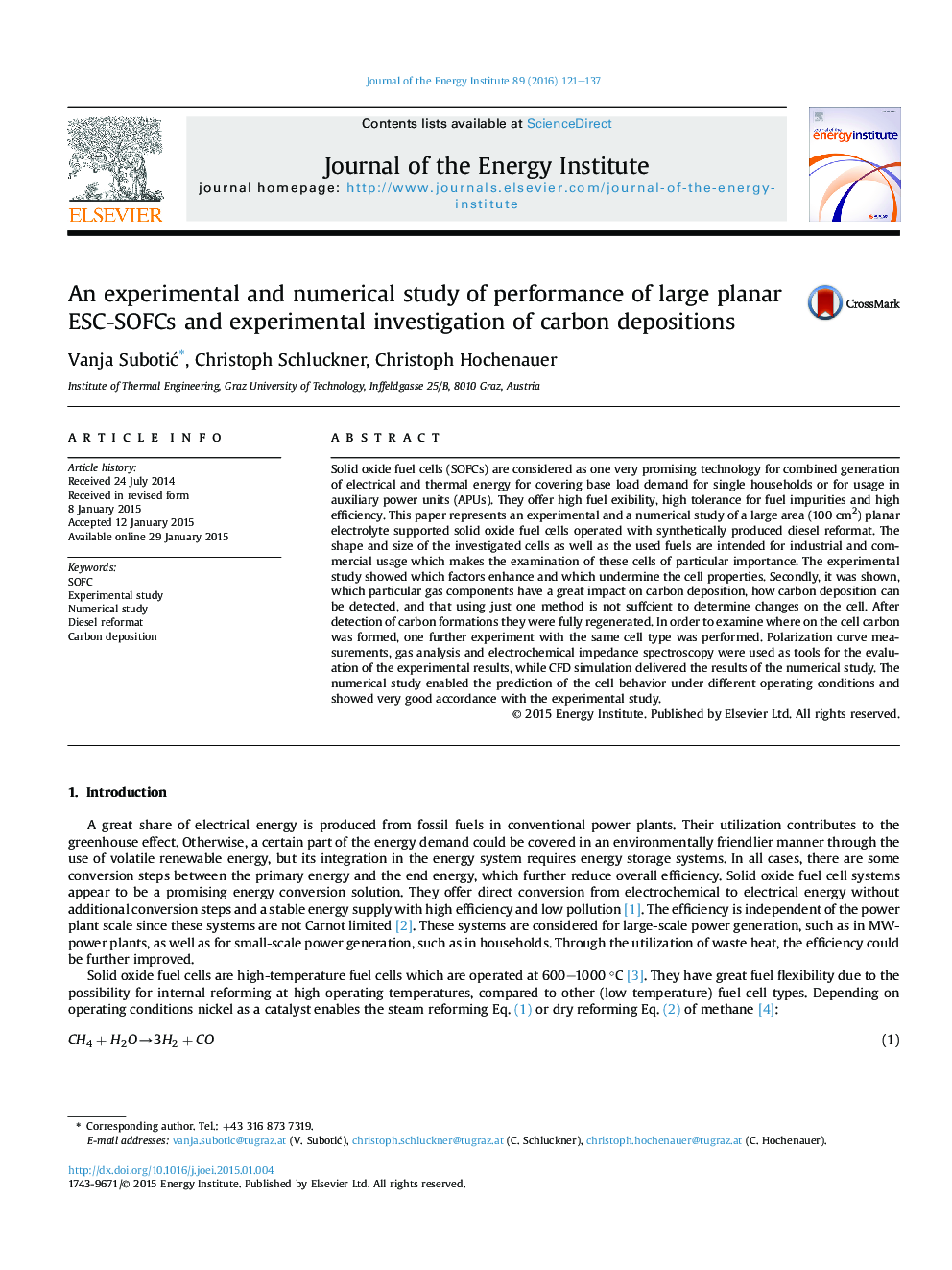| Article ID | Journal | Published Year | Pages | File Type |
|---|---|---|---|---|
| 1747602 | Journal of the Energy Institute | 2016 | 17 Pages |
•Investigation of large planar-industrially sized solid oxide fuel cells, which are supposed for the commercial usage.•Cell operation with a synthetically produced diesel reformat to present the “real operating conditions” (for example for the usage as auxiliary power unit in vehicles).•This study demonstrates not only experimental results but also the results obtained from the CFD (computational fluid dynamic) simulations.•Investigation of operating conditions which cause carbon formation on the anode surface and thus can lead to degradation of the cell performance and deactivation of the cell.•The cell was operated with three different diesel reformat compositions, where the volume concentration of single gas components was varied, with different water vapor content and at three different operating temperatures.•Our further aim is a development of one or more methods which can fully, economically, time-saving and cell-protecting regenerate the deposited carbon and a development of the numerical model for the simulation of carbon depositions and their regeneration.
Solid oxide fuel cells (SOFCs) are considered as one very promising technology for combined generation of electrical and thermal energy for covering base load demand for single households or for usage in auxiliary power units (APUs). They offer high fuel exibility, high tolerance for fuel impurities and high efficiency. This paper represents an experimental and a numerical study of a large area (100 cm2) planar electrolyte supported solid oxide fuel cells operated with synthetically produced diesel reformat. The shape and size of the investigated cells as well as the used fuels are intended for industrial and commercial usage which makes the examination of these cells of particular importance. The experimental study showed which factors enhance and which undermine the cell properties. Secondly, it was shown, which particular gas components have a great impact on carbon deposition, how carbon deposition can be detected, and that using just one method is not suffcient to determine changes on the cell. After detection of carbon formations they were fully regenerated. In order to examine where on the cell carbon was formed, one further experiment with the same cell type was performed. Polarization curve measurements, gas analysis and electrochemical impedance spectroscopy were used as tools for the evaluation of the experimental results, while CFD simulation delivered the results of the numerical study. The numerical study enabled the prediction of the cell behavior under different operating conditions and showed very good accordance with the experimental study.
